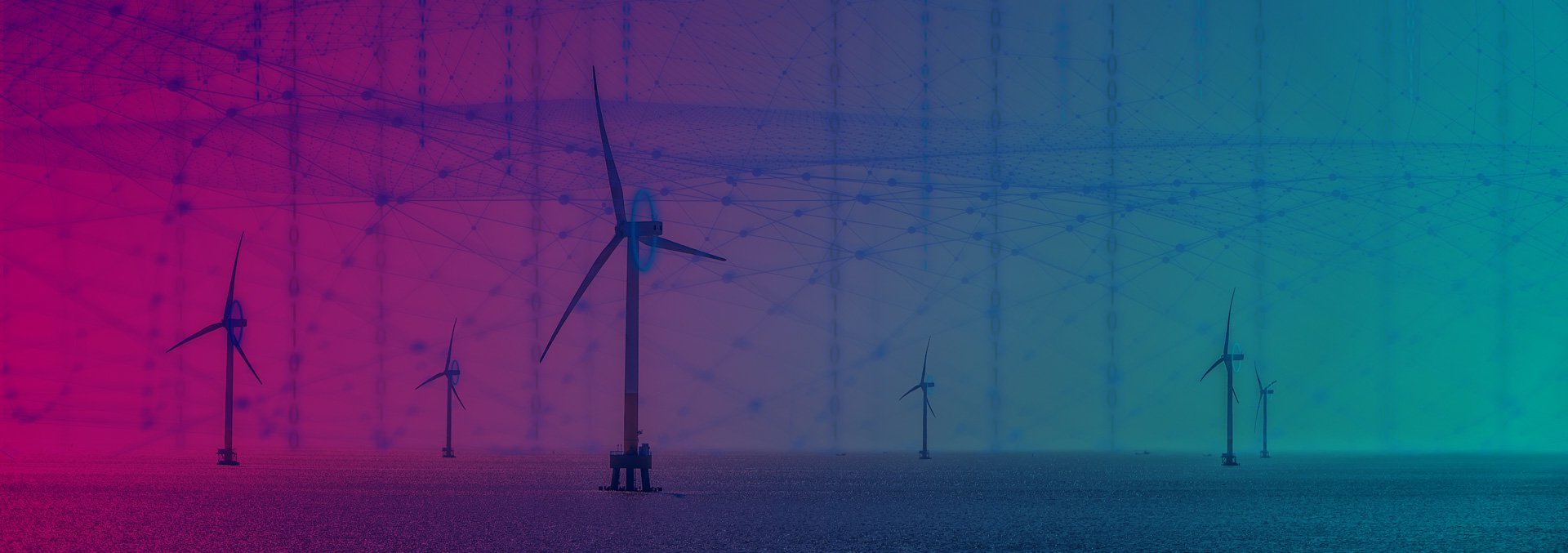| TGS insights give you the stories behind Energy data. These regular short 3-5 minute reads feature thought provoking content to illustrate the use of Energy data in providing insight, nurturing innovation and achieving success. |
As the world looks to renewables to support the energy transition to sustainable energy sources, wind power is rapidly gaining momentum as a major contributor to the energy mix.
In Europe, wind energy will be key to delivering the European Green Deal - a set of policy initiatives by the European Commission with the overarching aim of making Europe climate neutral by 2050. The IEA expects wind to become the primary source of power in Europe by 2027 and the EU Commission believes it could meet more than half of Europe’s power demand by 2050.
Meanwhile, in the United States, President Biden recently signed an Executive Order that includes doubling offshore wind power generation in federal waters by 2030. It will dramatically scale up the development of wind farms on the East Coast. Today, federal waters host 9,067 megawatts (MW) of total development activity and 13 offshore wind projects have secured offtake or won state solicitations.
Europe Ramps Up Offshore Plans
European wind energy accounts for around 15% of the EU's electricity, thereby avoiding 333 million tonnes of CO2 per year and saving Europe €28 billion a year in fuel costs. Recent government auction results show that the industry has created unprecedented levels of competitiveness through rapid progress in technology, industrial growth, and a reduction in capital cost.
Due to higher and more consistent wind speeds, offshore wind farms have the potential to generate more electricity at a steadier rate than their onshore counterparts. This is why the EU is setting out such positive plans for the continent’s offshore activity. Under the European Commission’s 2020 draft plan,, the EU’s offshore wind farms' capacity will be increased 25-fold.
The total energy generating capacity in Europe’s seas presently stands at 23 gigawatts (GW). Under the European commission’s offshore wind strategy, EU member states alone would achieve a capacity of 60GW by 2030 and 300GW by 2050.

Data Demands
Offshore wind turbines fall into two different types – fixed and floating. Today, the 62 MW of floating wind capacity in Europe still represents a small share in total offshore installations. However, floating wind technology increases the future potential for electricity generation from offshore wind farms. While bottom-fixed installations are limited to coastlines with low water depths and favorable sea-bed conditions, floating offshore wind has the potential for near-unlimited growth. There is no doubt that as floating technologies develop, they will become a significant element of the offshore wind generation mix.
Several factors are taken into consideration when wind developers decide where to pursue the development of a new project. These include compatibility of land, wind resource, environmental impact, and community input. Though a significant element of offshore wind farm siting is dependant on above-ground data, subsurface knowledge also plays an important role. Primarily, this is for fixed turbines, which require detailed analysis of the seabed before construction. The accuracy and reliability of the hydrographic and geophysical surveys, such as seismic imaging, are critical to ensure that turbine foundations can be located and designed most appropriately and cost-effectively - that means understanding the subsurface and seabed conditions. However, seabed analysis will also be necessary for floating structures to determine the most appropriate siting of anchored cables to tether the floating turbines and the transmission cables that are vulnerable to shifting sand environments.
Seismic activities can also extend to include seabed investigation, extensive laboratory testing programs, and the development of integrated ground models. These techniques can be applied to create the geological models whose results can then be used in future offshore developers tender submissions.
Of particular interest to the offshore windfarm industry are full geophysical surveys utilizing multibeam bathymetry. Accurate mapping of the water bottom is necessary to define seafloor conditions and multi-beam bathymetry provides this, allowing identification, plotting and assessment of the seafloor and sub-seafloor geologic hazards.
There are considerable volumes of multibeam data libraries worldwide, held by companies like TGS, that may be suitable in the future for understanding seafloor stability in the development of both fixed and floating wind farms.
Above ground, the offshore wind farm sector demands data on a myriad of other issues to determine the siting of a wind farm complex. Most importantly, weather - and, in particular, wind conditions of speed, direction, shear, and turbulence - are the most basic consideration. However, additional factors, such as ocean currents, storm wave loading, ice loads, and potential shipping routes, need to be considered before optimum sites can be considered. From here, the turbine configuration itself - taking Met Mast measurements, modeling, data crunching, and such like – can be proposed.
To optimize offshore wind farms' efficiency and effectiveness, the acquisition, management, and analysis of big data from multiple sources will be at the core of its speed of development and long-term success as the industry matures.
Future Direction
To meet the demands of expected growth in the coming years, several significant offshore wind farm projects are slowly making their way from the planning table to construction. One of the most exciting of these is Dogger Bank, the world’s largest offshore wind farm development, located in the North Sea.
Developed in three phases – Dogger Bank A, B and C – each phase will have a generation capacity of up to 1.2GW and represent a multi-billion pound investment. The installation will be capable of powering up to 6 million homes. Seismic companies have considerable seismic data covering this area and existing and future data will be a key element in the successful construction of the three projects.
Meanwhile, in Norway, the government has recently opened two areas for offshore wind development, which are said to have an expected capacity of 4,500 MW together. The applications for the first of these areas - Utsira Nord - is suited for floating wind power is close to shore, and provides opportunities to demonstrate the potential for larger projects.
The area has been the subject of extensive seismic surveys, including TGS’ landmark ocean-bottom node (OBN) multi-client survey in the Norwegian North Sea. Undertaken in conjunction with its partner, Axxis Geo Solutions (AGS), the 1,584 square kilometers Utsira survey was completed in October 2019. It could provide significant in-depth analysis of the area for potential developers.
Data Insight for Wind Development
The analysis and design of windfarm placement and foundation systems certainly benefit from the decades of experience accumulated by data companies who have historically served the offshore oil and gas industry. The requirements related to the different foundation types of wind farms are based on a rigorous and comprehensive understanding of the characteristics of the marine sediments and the environmental loadings. Seismic data will be integral to this process.
In addition to subsurface insight, energy data companies such as TGS are well-positioned to contribute their extensive knowledge and AI-driven technology dealing with the challenges arising from collecting and analyzing the vast quantities of data required of modern, high-resolution wind modeling and prediction.


